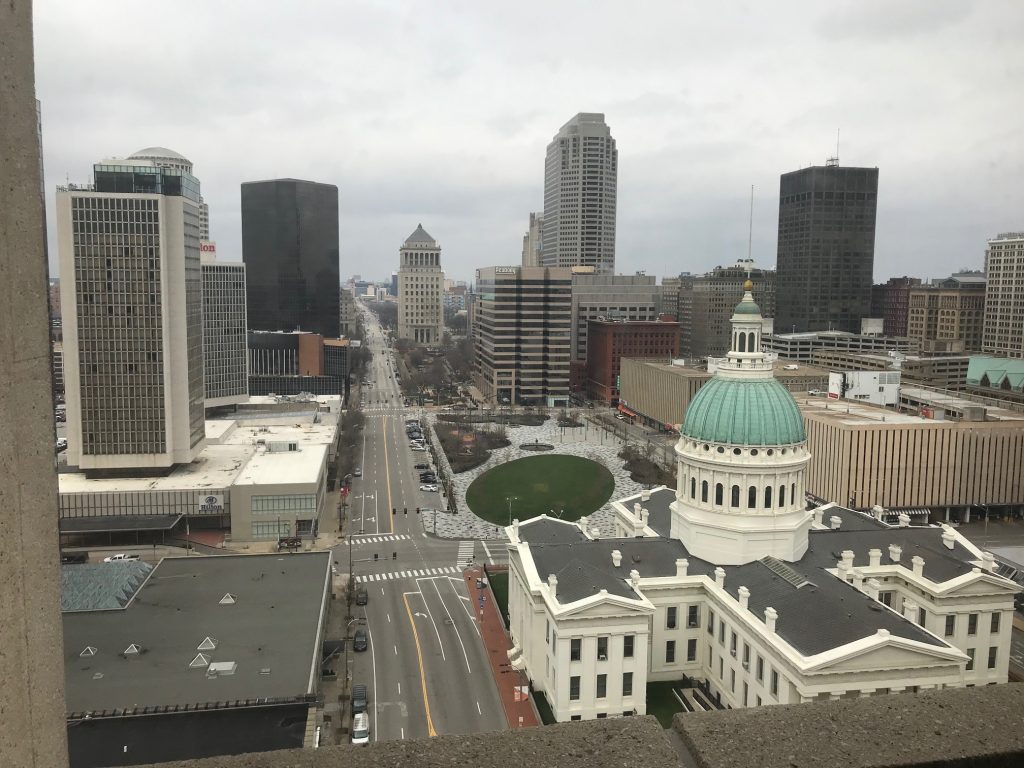
Prospect & Refuge: Aspects of Biophilic Design.
Since the dawn of time, humans have built environments to serve a variety of purposes. Spaces for protection, for gathering, for isolation. Places to shelter, work, and play. In recent years, as our built environments have secluded humans further and further from the natural environment, it became clear that some spaces proved more effective than others. These spaces exhibited increased productivity, user satisfaction, and health benefits for their users. Why? The answer lies in the study of biophilia.
Biophilia is defined as humanity’s innate need to connect with nature[1]. Good design naturally incorporates elements of biophilia, creating spaces that induce a positive subconscious reaction by mimicking nature. To do so, designers simulate nature’s spatio-visual characteristics, a method known as Prospect and Refuge. What is Prospect and Refuge? As Grant Hildebrand remarked on Frank Lloyd Wright’s celebrated Falling Water[2], describing “prospect”:
“We are invited to savor danger from a haven of safety.”
Evolution has programmed humans to desire environments where one can see but not be seen (refuge). Inherently, we seek out and are soothed subconsciously by spaces that offer a view, or Prospect, but impart a sense of protection, or Refuge. Below are some methods in which Prospect and Refuge are often utilized to create good design.
Whenever people visit our office, tours begin with a stop at our Large Conference Room. A six-foot wide section of floor to ceiling glass occupies a corner of the room, with a suspended credenza running along that length between the wall and a column. Standing before the credenza and hovering above Market Street, a panoramic view of downtown St. Louis is revealed from our perch on the 18th floor. The Old Courthouse. Kiener Plaza. City Garden. Much of downtown. It is a spectacular view that people love.

When experiencing such a space, the resulting feeling is instinctual. Most great spaces incorporate this concept into the design. It also occurs in nature, such as stopping at a protected overlook on a hike. The sensation, at its core, is the same: a sense of openness coupled with excitement.

In Biophilic terms, this sense of openness and excitement is referred to as “Prospect”. Human beings appreciate a good view. However, we also desire some level of protection with that view. For example, standing on Chicago’s Willis Tower glass enclosed Skydeck provides an unobstructed view. However, standing 103 floors up on nothing but glass often triggers a sensation of alarm and even panic (clearly…not all people).

One needs this level of protection to create a good sense of Prospect. Providing Prospect is the function of the credenza in front Fox’s conference room window. It allows the viewer to enjoy the vista with a perceived sense of safety. One is protected yet able to survey the surroundings. When effectively utilized in design, Prospect relieves stress and heightens our awareness.

At the opposite end of the Biophilic spectrum is a concept called “Refuge”. Refuge is the sensation induced by an enclosed space that is separate from its surroundings yet does not feel confined or claustrophobic. These types of spaces are necessary to perform certain tasks, as most people find it difficult to focus in areas that do not provide some level of physical and acoustical separation from active places.
However, complete separation is undesirable, as most individuals require enough connection to allow for concentration without distraction. Designing for Refuge may include floors, wall, ceilings, but it can also be achieved with furniture (for example, a booth at a restaurant).

Utilizing Prospect and Refuge requires balance, or the effect is either lost or, worst-case, proves detrimental to the user. In Fox’s design practice, we utilize both elements of Biophilic Design. At the Jesuit Archives, the second-floor catwalk provides a sense of Prospect, while the lounge chairs below offer Refuge.

At InSinkErator, the Innovation Lab and second floor Work Cafe leverage long focal lengths, glass, and limited visual barriers to achieve a sense of Prospect, while an abundance of Focus Booths provide Refuge.

With each space supporting the other, great buildings utilize simple yet powerful concepts like “prospect” and “refuge” to go beyond meeting basic needs and instead provide architecture that inspires and endures.
[1] https://www.contractdesign.com/practice/healthcare/interior-habitats-the-theory-of-prospect-and-refuge/
[2] https://www.contractdesign.com/practice/healthcare/interior-habitats-the-theory-of-prospect-and-refuge/